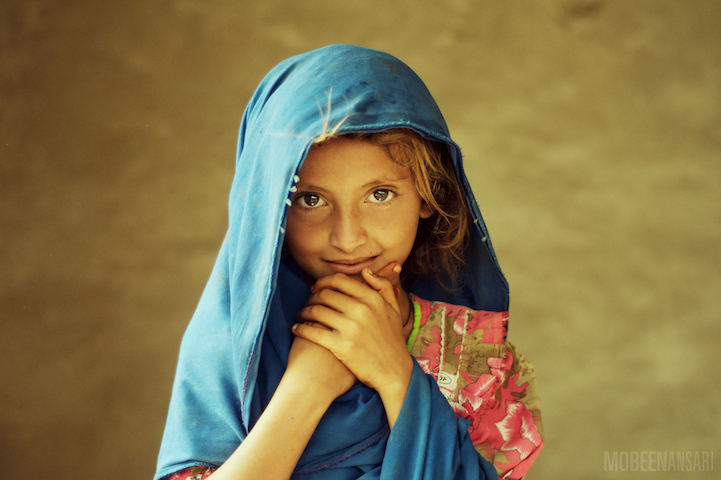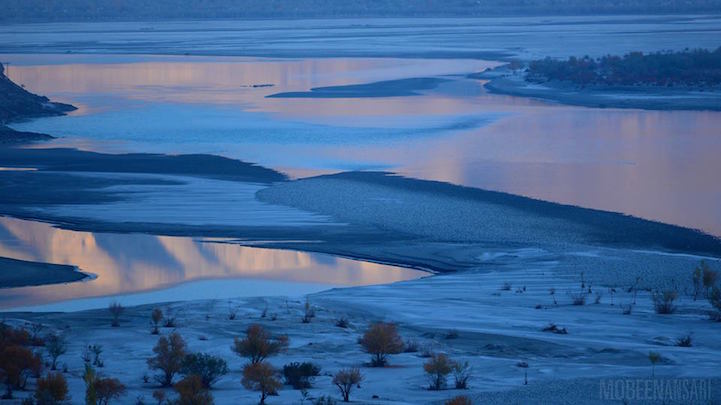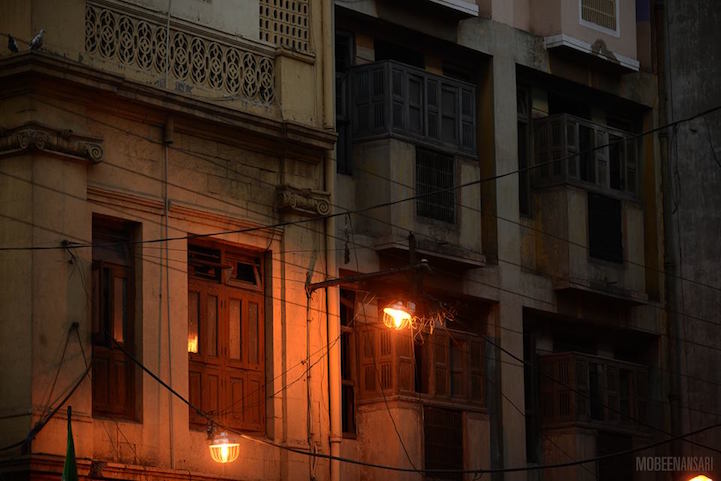Photojournalist Mobeen Ansari loves to venture where his photography leads him, particularly when his human interest stories take him to uncharted and unexposed locations in his home country of Pakistan. Ansari’s photography aims to shed positive light on Pakistan across the international realm, and help discard the negative media portrayals of his country. He highlights the beauty, vibrancy, and authenticity of the unsung heroes of Pakistan, and celebrates the country’s diverse landscapes and cultures through his images.
Ansari has a long history of artistic talent in his genes. Watching his grandmother paint intricate landscapes throughout his childhood instilled in him an early awareness and appreciation for extraordinary features in everyday details. He also lost his hearing in both ears as a result of severe meningitis at the age of 3 weeks, and believes that it heightened his visual and aesthetic senses. Ansari’s began photographing ordinary local events and daily occurrences in high school, and progressively transformed into a street photographer. His interest in painting and photography paralleled one another, and Ansari went on to study painting in college. Today, his artistic talents have broadened to photography, painting, sculpting, printmaking and video production.
The personalities Ansari photographs range from commissioned portraits to subjects in exhibitions, and photographs for his past and upcoming books. His first book Dharkan: the Heartbeat of a Nation, was published in 2013. The portraits and stories shed light on the iconic people who have helped shape Pakistan including sanitation workers, philanthropists, actors and politicians. He also recently released a short film, Hellhole, on gutter cleaners. The documentary reveals life as seen through the eyes of the oft forgotten worker, and reminds us about the humanity that is necessary throughout society.
We had the wonderful opportunity to ask Ansari about the themes and messages he hopes to share through his photography. Scroll down to read our exclusive interview.



The majority of your photography is based in Pakistan. Is there a story you hope to capture and tell with the photos?
Besides being born and bred here, I've been very privileged to have traveled all over Pakistan and I've come to understand it more over time. When you understand a place or a person well enough as a photographer, you can do justice through photos and easily bring out the best or the worst in them.
10 years ago I noticed that Pakistan's narrative in photos had been limited to war, politics or landscapes—and it still is! One day I read about an 102-year-old wrestler whose career dated back to even before Pakistan was founded, and was currently training younger wrestlers. It was a beautiful story and it inspired me to look at human interest stories. I realized that if you remain passive, bad news and ground realities will never go away. But if you take steps and go out of the way, you'll start to find good in every corner.
My mission for the last 10 years has been to change the narrative of Pakistan through photos, whether it is about its people who have impacted the country's histories and professions, or about unknown cultures. As a country, Pakistan is young. However, its cultures and civilizations date back centuries and still hold very unique identities.


Your portraits and human interest photos convey lots of depth and often reveal deeper stories. How do you decide which portraits to capture?
In street photography I look for different kinds of faces—they can be interesting faces, faces that tell stories, or faces that seem as if they embody someone from centuries past. For example, if I find somebody who looks a lot like a subject of a Rembrandt or Vermeer painting, I photograph them in a way to seem as if I’ve traveled back in time and captured them!


What is the process of working with the people you choose to photograph?
I believe the two most important aspects of portraiture are making sure the subject is comfortable, and verbal and non-verbal communication. I have photographed people from all walks of life, but I approach each person in an equal manner. I do not have an assistant or a team, and on occasion I may use a translator, but the connection between myself and the subject is direct and allows the subject to be himself or herself. Because of my hearing loss, I depend on body language and lip-reading to understand people. This helps a lot in taking portraits as most communication becomes non-verbal.


What messages do you hope to convey through your photography?
Art transcends barriers of all kinds and I find absolute joy in going to uncharted territories, and bringing them to the world through photographs. I find it fascinating when a person from Australia sees a photo of a village scene in South Punjab and connects to it because it would remind them of home, or of a book they read. In all this I believe we as a world become one and start understanding each other, or letting the best of others enrich us.
What appeals to you most about shooting in locations that are uncharted territories?
Having lived in the capital and only traveled to large cities all my life, I was curious to see what was beyond them and explore more of my country. When I was studying in college I would often wander off to old alleys and places where people normally would not go. I found hidden jewels there, like old architecture and unique people and stories. From there, I decided to apply the same principle to Pakistan on a larger scale. While Pakistan has well known tourist destinations and landmarks, I have always found places off the beaten path much more fascinating. I think it is because identity and uniqueness is always strongest there.
Recently I did an expedition in Broghil, also known as the historic Wakhan Corridor, which is in North Pakistan and borders Afghanistan. Not only did I see truly otherworldly and beautiful landscapes there, but I also got to learn about the proud and amazing Wakhi people and their culture. From clothes to architecture to food to faces, everything was a photographer's heaven!












What's next for you?
I am currently working on an assignment with the Bill & Melinda Gates Foundation, a traveling exhibition, and two photography books. The assignment with the Gates Foundation will focus on humanizing polio workers and include human interest stories all across Pakistan. The traveling exhibition will feature photos taken during my trips to the Wakhan Corridor over the past year. As for Ansari’s upcoming books, the second book is a continuation of ‘Dharkan: the Heartbeat of a Nation', and will feature more iconic people in Pakistan. The third book, ‘White in the Flag', is titled after the Pakistan flag. The green on the flag stands for Muslims while the white stands for non-Muslims. The book is about the religious minorities of Pakistan.





Mobeen Ansari: Flickr | Facebook | Twitter | Blog
My Modern Met granted permission to use photos by Mobeen Ansari.























































































